Having appeared in many fairy tales of the previous generation with the name PHOENIX LAND, the sad thing is that the hornbill is now on the list of species facing great danger of extinction in nature because The terrible rate of human hunting for meat, jewelry, decorative specimens… Not to mention the need to raise them as pets, along with the severely affected habitat, has pushed hornbills to the brink of extinction in nature
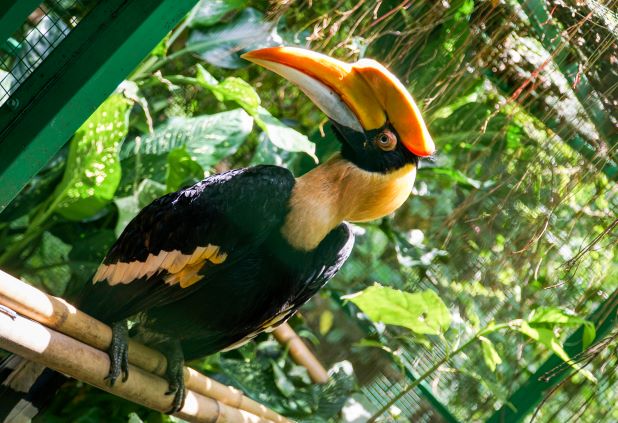
Hornbill, a strange bird with a unique horned beak
The precious bird is nicknamed “Earth Phoenix”
The hornbill, scientifically named Buceros bicornis , is the largest hornbill in the Hornbill family, with a weight of up to 4kg, reaching a body length of 90-122cm. Adults have a wingspan of up to 1.6m: an impressive wingspan that makes them look massive and majestic. They are distributed in plains and mountainous areas with tropical and subtropical climates in some Southeast Asian countries, India and southern China.
Size is not the most impressive thing about hornbills. People can easily recognize this bird based on its size, large body weight, and especially its long, curved beak combined with a curved beak cap with bright, vibrant colors. The beak with this special beak cap is usually bright yellow or orange-yellow, easily identifiable from afar, and is made of keratin. Until now, scientists have not yet determined the exact use of the hollow beak cap. This. The most plausible hypothesis is that they are used as a tool to attract mates
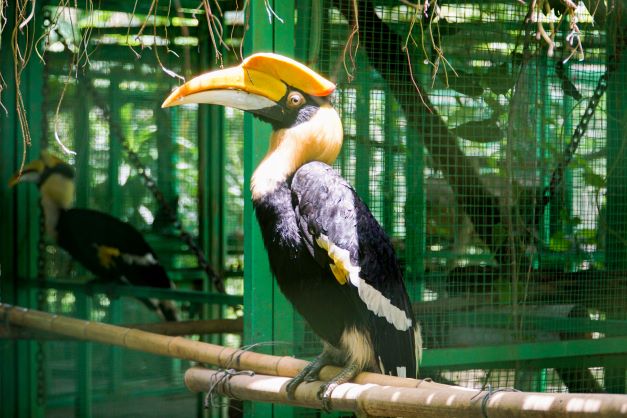
This bright, large beaked hat has the effect of attracting mates
Like most hornbills, male hornbills have red or orange irises, while females have white pupils and turquoise or light blue irises.
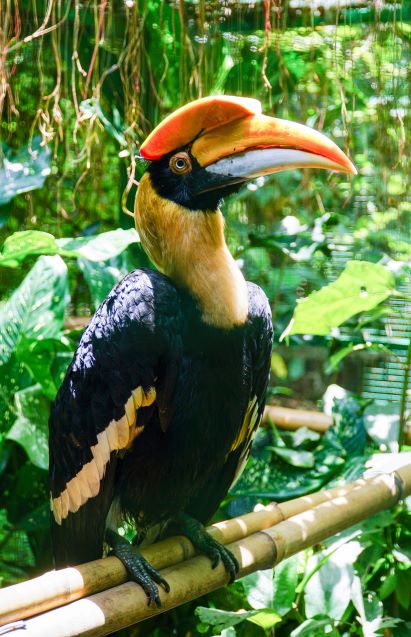
Female hornbills have turquoise or light blue irises
When young, they have gray fur, gradually becoming jet black as they mature. The hind half of the body and the tail have white feathers with a shiny black rim.
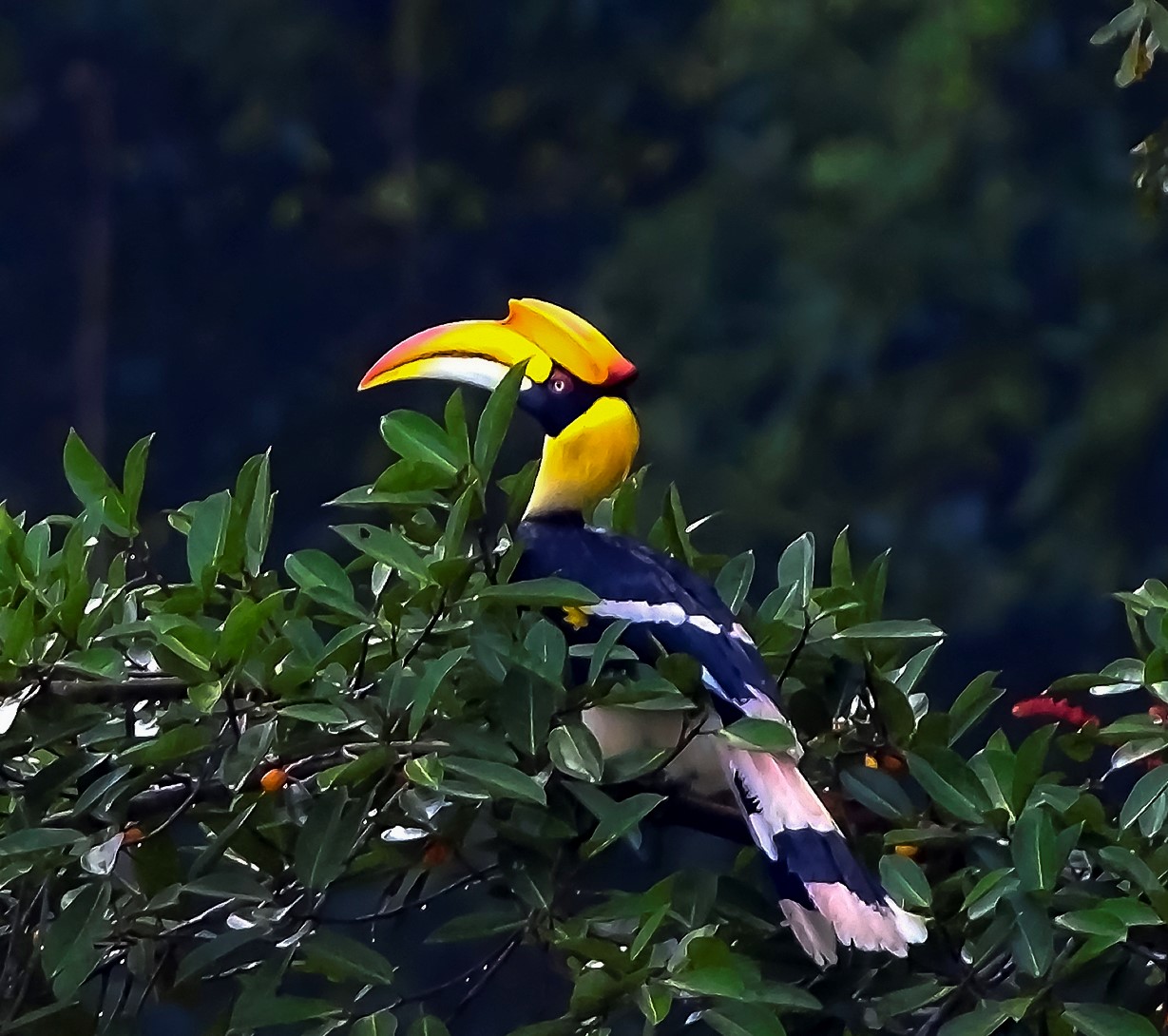
As an omnivore, the hornbill’s favorite foods are fruits, worms, insects, and even some small rodents and other small birds. Usually living in pairs throughout their lives, hornbills are also known as faithful birds. However, there are times when hornbills form groups of up to 40 individuals
One of the tree species that hornbills prefer to reside in and nest in during the breeding season is the tung tree (also known as valley, post, flick…) because of the large tree cavity and the ideal height of the tung tree to fit the The large size of the hornbill, along with its habit of resting on tall trees. Other tall woody plants are also ideal habitats for hornbills. With this characteristic, hornbill is considered one of the indicators of high forest floors and perennials.
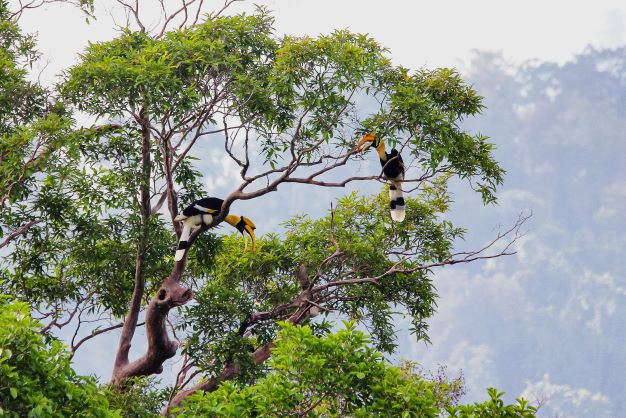
Hornbills often rest and nest during the breeding season on tall trees
Hornbills are faithful birds, pair up and stay monogamous for life. Birds often roost on high tree branches, only nesting in tree cavities from February to March every year to lay, incubate eggs and take care of young birds. The female bird stays inside, filling the nest’s mouth and only leaves the nest after about 3 months to join the male bird in finding food for her young and protecting the nest from the outside. The young birds remain in the nest for about another month before they are ready to leave the nest.
With its beautiful and unique appearance, since ancient times the hornbill has been honored by many tribes as a precious bird with supreme power, so they choose the hornbill as a mascot to worship the gods during holidays. festival. Ancient people believed that the blood of young birds was effective in comforting unjust souls. Since ancient times, hornbill feathers and their beautiful horned beaks were also used as household decorations and as jewelry to make jewelry. Beautiful and powerful Hornbill has the name homrai in Nepali, or banrao in Mussoorie, both meaning “king of the jungle”.
One of the decorative accessories using hornbills of hornbills and their relatives is the traditional headgear of the Nyishi people – an indigenous ethnic group in Pakke. The Nyishi people use the upper half of the hornbill’s beak as a traditional headgear called Pudum, after the hornbill in their language, Paga.
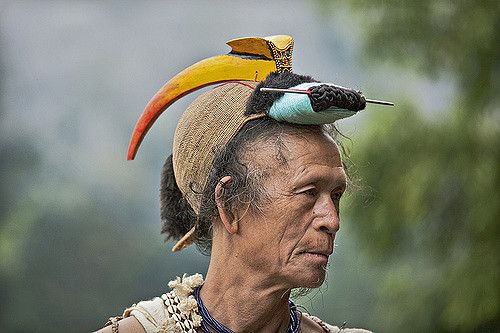
The Nyishi man wears a Pudum hat. Photo: ©️ foto_morgana
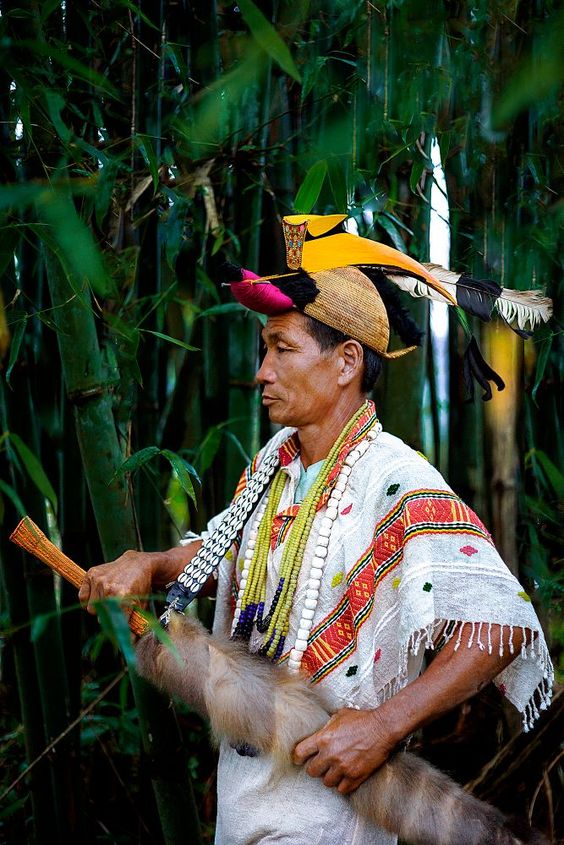
This beautiful bird appears in many traditional cultures and is mentioned many times in folk tales and rhymes of the Nyishi people. Today, to preserve this bird in the wild, people have stopped using their beaks to make Pudum hats, and replaced them with beaks made from fiberglass.
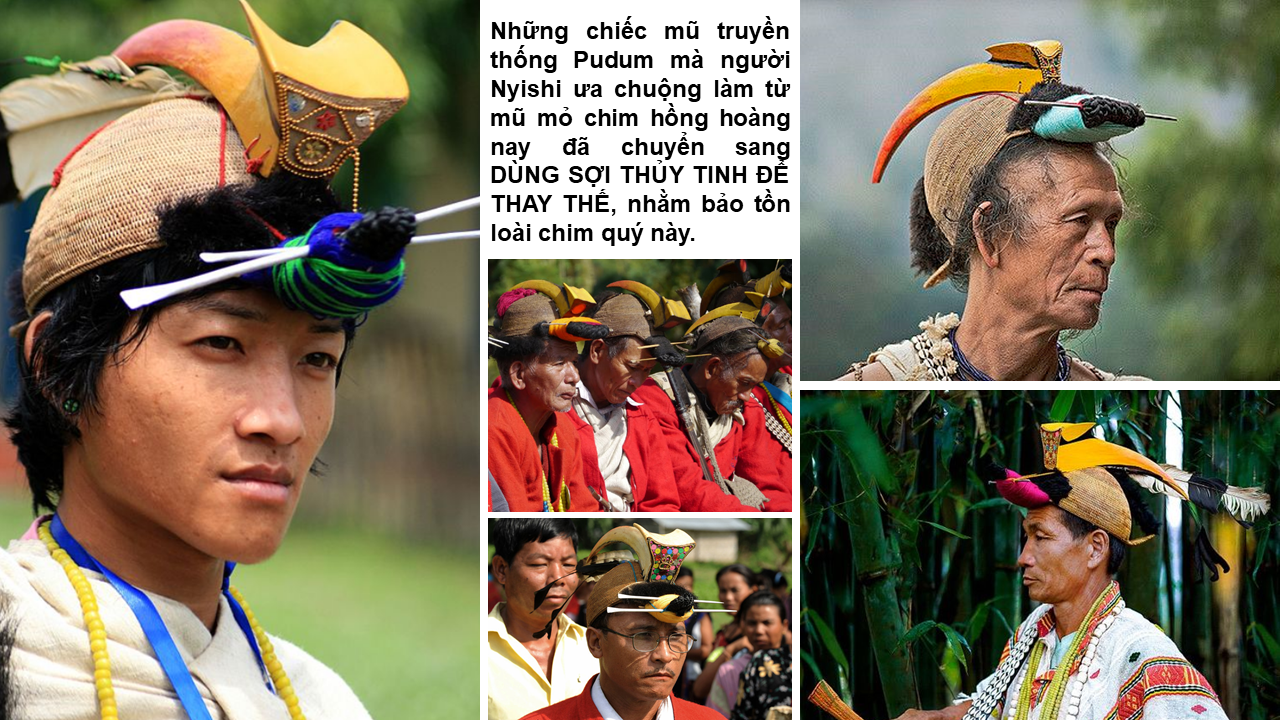
To this day, the need to hunt for meat, to make jewelry, and to raise as pets for this precious bird is still there. Along with the loss of habitat such as tropical forests, and humans spreading their presence to all regions, it has seriously affected the living space of hornbills, causing the number of hornbills in the wild to decrease. The natural environment has declined seriously and they have had to stand on the edge of extinction in the wild





